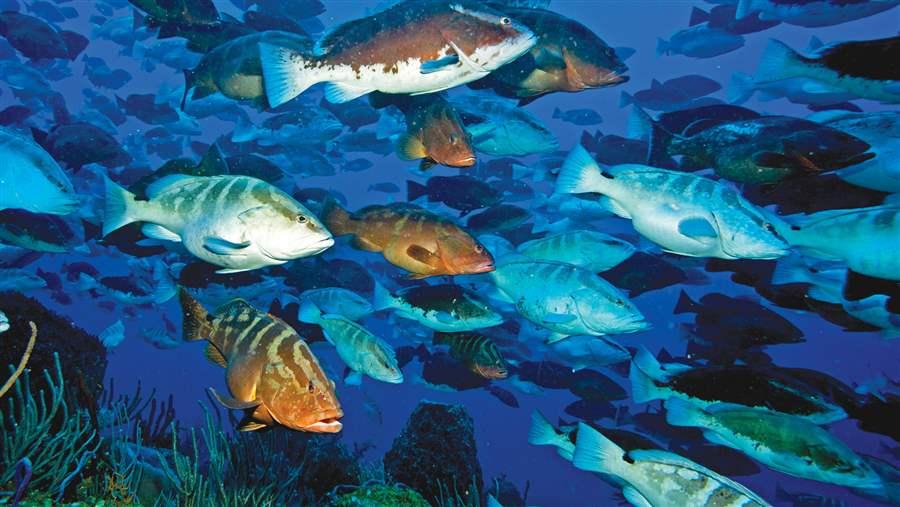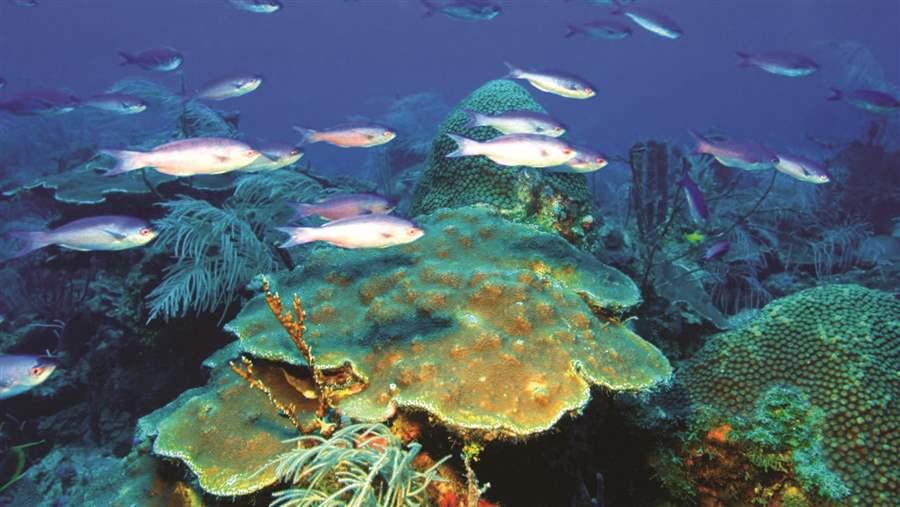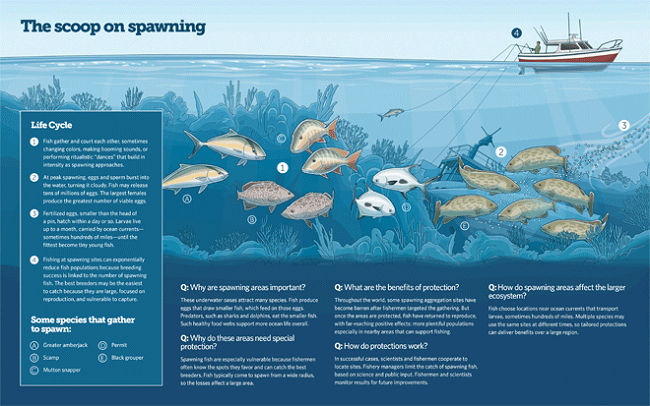Breeding Abundance: Protecting Places Where Underwater Life Begins
 © Paul Humann/Reef Environmental Education Foundation Grouper Moon Project, REEF.org/groupermoonprpoject
© Paul Humann/Reef Environmental Education Foundation Grouper Moon Project, REEF.org/groupermoonprpojectSome fish, such as these Nassau groupers in the Cayman Islands, make an epic journey to special places to spawn. It is an event rarely witnessed.
This fact sheet was updated in August 2016 to reflect the most recent information.
Space to spawn
At special times each year, certain fish find their way to unique gathering places for a mating ritual that helps determine the survival of their species. They can arrive by the thousands, and some may travel hundreds of miles. They know these places because their ancestors met there time and time again throughout their history.
But humans have come to know these places, too. These fish, concentrated in one spot and distracted by their biological task, are easy prey. Around the world, these locations have become fishing hot spots, with dire consequences. Fishermen pull breeding fish out of the ocean when they would otherwise produce the thousands of offspring needed to populate the next generation. As a result, some fish, including snapper and grouper, have dwindled; others are severely depleted or even endangered.
Protections for spawning sites can boost healthy populations and help the recovery of struggling species. In some spawning areas where resource managers have limited fishing, fish have grown larger and more numerous, and their populations expanded over a wider area, replenishing nearby fishing grounds. Fish also produced greater numbers of eggs that were more likely to survive and hatch. Additional species are attracted to this abundance, so food webs grow more robust. Safeguarding spawning sites is a proven way to help fish flourish and replenish the oceans with life.
 © Jiangang Luo
© Jiangang LuoThis protected area in the Dry Tortugas National Park provides safe habitat that helps fish populations thrive.
Success story: Dry Tortugas
About the reserve
- Encompasses 246 square miles west of the Florida Keys, including two areas in the Florida Keys National Marine Sanctuary and one site in Dry Tortugas National Park.
- Established in 2001.
- Created with extensive collaboration among commercial and recreational fishermen, divers, scientists, conservationists, citizens, and resource managers.
- Prohibits fishing year-round.
Proof of success
- Yellowtail and mutton snapper, as well as previously overfished species, such as black grouper, increased in abundance and size inside the reserve and throughout the region.
- Gatherings of mutton snapper increased from 100 fish in 2002 to more than 4,000 in 2009, when they were observed spawning inside the reserve for the first time since it was established.
- Regional commercial fishermen have seen a greater abundance of fish in surrounding areas, and an increased catch of reef-dwelling fish.
- Charter boat captains and private anglers experienced no financial losses as a result of the reserve’s creation.
Sources: National Park Service, Implementing the Dry Tortugas National Park Research Natural Area Science Plan: The 5-Year Report (2012), http://www.nps.gov/drto/naturescience/technicalreports.htm; National Oceanic and Atmospheric Administration, An Integrated Biogeographic Assessment of Reef Fish Populations and Fisheries in Dry Tortugas: Effects of No-take Reserves (August 2012), http://ccma.nos.noaa.gov/ecosystems/coralreef/tortugas.aspx.







